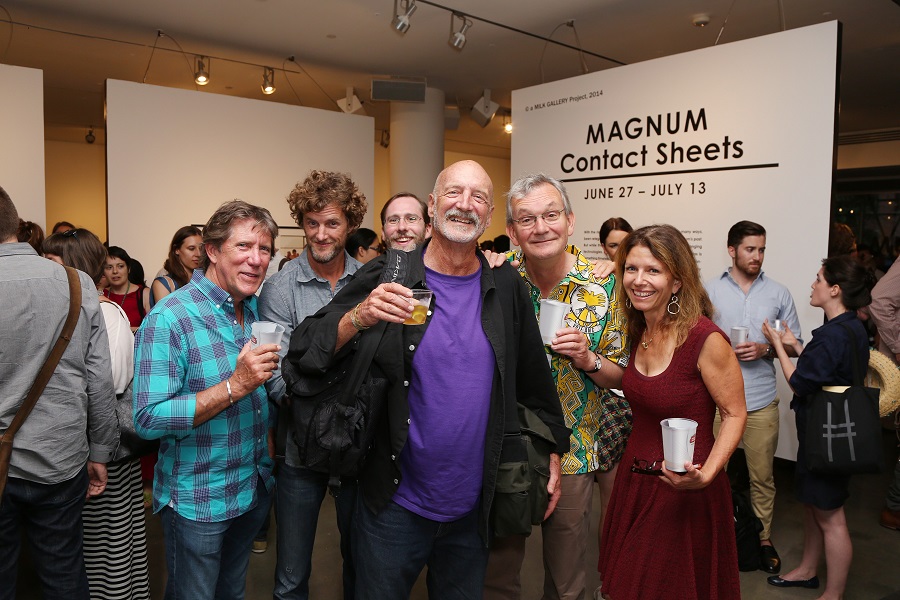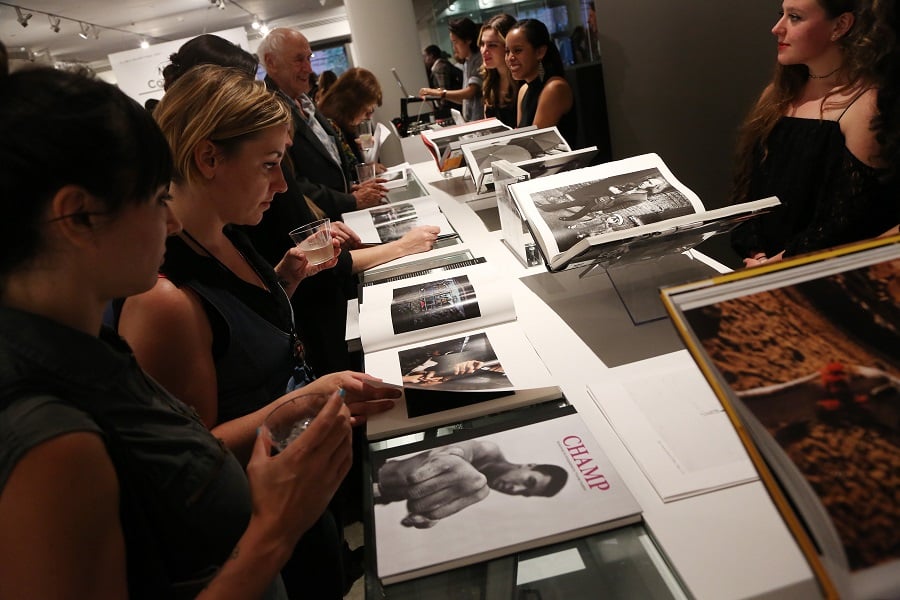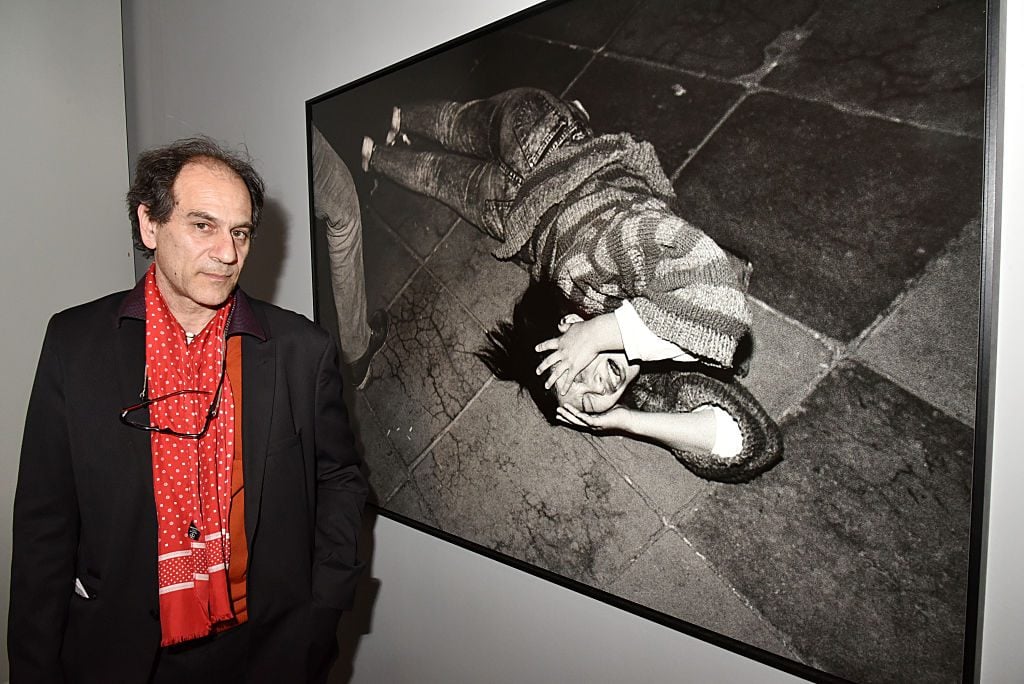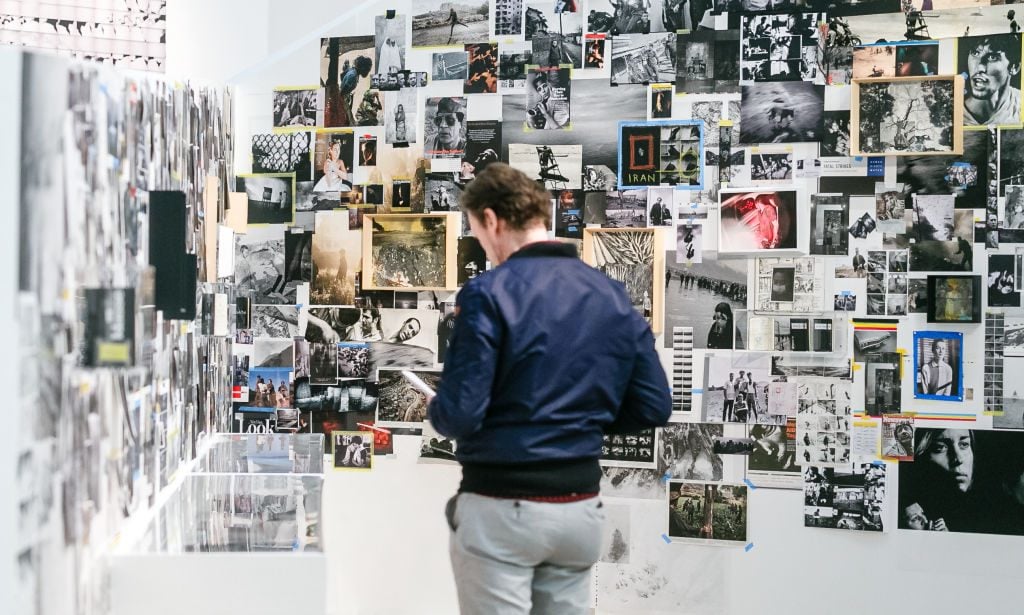In August of last year, the international photographic cooperative Magnum Photos came under fire for licensing documentary images of sexually exploited minors. At the center of the controversy was a 30-plus-year-old series by Magnum photographer David Alan Harvey documenting young sex workers in Bangkok, which included several images of nude girls whose faces are unconcealed. “Prostitute,” “Breast,” “Underclothes,” and “Teenage girl – 13 to 18 years” were some of the keyword tags labelling the images.
Until recently, if you reverse-searched those tags, you’d be offered dozens of documentary images like Harvey’s available to license for a small fee. According to fstoppers.com, the website that brought Harvey’s images to public attention, Magnum’s website generated more than 100 results for the search term “girl prostitute.”
The vast archive, fstoppers wrote, featured “numerous photographs of child sex workers, many of whom were photographed without their knowledge.” These images, the site explained, “may constitute acts of child sexual abuse.”
In the seven months since fstoppers’ post, Magnum has been caught up in a maelstrom of public attacks about its opaque conduct policies; the imagery contained in its famed archive; and its alleged blind eye to the behavior of Harvey, who has since been publicly accused of sexual misconduct and harassment. (Through his lawyer, Harvey has denied the allegations.)
The 74-year-old organization, which is owned and operated by its members, has vowed to change—starting with its archive.
“Recently, we have… been alerted to historical material in our archive that is problematic in terms of imagery, captioning, or keywording and we are taking this extremely seriously,” Magnum president Olivia Arthur said in an August 14, 2020 statement in response to the backlash. (It was the first of a half-dozen such statements she would put out over the next half-year as she tried to keep up with the waves of online criticism levied against the organization.)
Magnum soon began what Arthur described as an “in-depth internal review” to “make sure that we fully understand the implications of the work in the archive, both in terms of imagery and context.”
“Some cases will be clear cut,” she added, “others will not be easy decisions, full of grey zones.”
Today, the organization is mired in the morass of those grey zones as it combs through its archive of nearly one million images to determine which should be removed from public view—the first such comprehensive exercise in the agency’s history. Big questions loom behind it all: what takes precedence, a fidelity to history or to contemporary ethics? Should problematic material be contextualized or expunged? Who gets to decide, and how?

Ryan Harvey, David Alan Harvey, Martin Parr and friends. Photo: J Grassi/Patrick McMullan.
The Grey Zones
Founded in 1947 by a group of photographers that included Robert Capa (who came up with the idea) and Henri Cartier-Bresson, Magnum was one of the first cooperatives of its kind. Nearly 75 years later, it has counted scores of famous photogs among its ranks, from Dorothea Lange and Mary Ellen Mark to Martin Parr, Sebastião Salgado, and Alec Soth.
These are the eyes behind era-defining images of the last three-quarters of a century. But the history they captured is also marked by violence, destruction, exploitation, and horror.
“We are thinking hard whether it is right to be selling images like this at all, and how widely they should be on view,” Arthur, a Magnum member photographer herself, said in an interview. “I say that we are ‘thinking hard’ because working all of this out and getting it right without eliminating the work and original intentions of it is very delicate.”
Indeed, the process is far from simple. First, Arthur said, she and her team removed the “most offensive or inappropriate material” and ensured that Magnum was not unknowingly holding illegal imagery in its archive.
“But it goes much deeper than what is legal or not,” she continued. “Our photographers document tough subjects and we now realize that we need to be much more careful in presenting this material, particularly when it comes to protecting the rights of vulnerable people shown in the images.”
Pressed to specify what Arthur meant by “grey zones,” a representative from the agency suggested they could include photographs of explicitly sexual or violent scenes; images that raise questions of representation in relation to race and gender; or those taken without the consent of the subject or under the implied pressure of an imbalanced power dynamic.
Over the last seven months, public debate has honed in on a particular type of image: those depicting underage children in vulnerable circumstances.
Benjamin Chesterton, founder of the UK-based film production company Duckrabbit, has been among Magnum’s most vocal critics, pointing out examples of exploited minors in the agency’s archive online. Few are as blatantly exploitative as Harvey’s “Bangkok” images. Instead, the underage subjects’ vulnerabilities often come through context, such as in documentary images depicting victims of rape or abuse. From Chesterton’s perspective, these photographs put suffering and trauma on display, not the actions of the abuser. It’s a crime on top of a crime: the subject’s agency is stripped away.
Chesterton points to another image: a 2001 black-and-white photograph by member artist Patrick Zachmann showing a toddler touching his penis. The pretext is cuteness; the boy isn’t sexualized but admired with the affection of a parent. But for Chesterton, “it sets a precedent that it’s okay to take and sell images of children touching themselves. If I took such a photo of an adult and published it without consent, seeking to profit from it, no one would have any problems understanding that as abuse.”

Guests peruse Magnum’s book archive. Photo: Photo: J Grassi/Patrick McMullan.
The Review
Much of the mess being untangled now was created in 2011, when the agency made the decision to put its entire catalogue online. “There was too little vetting of images and keywording, in the haste of ensuring that the content would be available transparently to any user, in particular professional users who may search in very granular terms,” Arthur said.
The organization is now rethinking how to present this material—and to whom it should present it. Whereas the catalogue was once publicly browsable, allowing any person to view and download lo-res versions of individual photos, registration is now required—a process that will prioritize publishers, media outlets, and other credentialed organizations. Additional steps that might come in the future include correcting and updating metadata, putting warnings on sensitive images, and keeping stories intact to make sure the images are seen in their full original context.
This is crucial, explains Savannah Dodd, the founder of Photography Ethics Center, an organization dedicated to teaching ethical literacy. Archivists “construct the interface through which the viewer accesses archival material, and this interface shapes how the viewer interprets the work contained within the archive,” she said. “There are certainly ethical responsibilities that must be met with regard to how these interfaces are constructed and how the archive contextualizes the work it contains.”
So far, Magnum has reviewed a fifth of its images and removed 138 keywords. (The organization retained an external team of reviewers for the undertaking; that group is working alongside Magnum staff and photographers.) More than 3,500 images have been flagged as sensitive and are being moved to a separate library.
“Material that is set aside will be considered on a case-by-case basis in discussion with the photographer,” the organization explained in a public update on the review process shared on February 19. “It may be re-integrated into the archive in a protected way with the appropriate warnings and safeguards, or in some cases removed altogether.”
Additionally, more than 1,500 images of children in the Magnum archive have been cleared for legality by the Internet Watch Foundation, an organization that monitors and removes child sexual abuse content, as well as an independent lawyer. Magnum plans to continue the process through the end of this year.

Photographer Patrick Zachmann poses with his work from “So Long China 1982-2015” at Maison Europeenne de la La Photo in Paris on April 5, 2015 in Paris. Photo by Foc Kan/WireImage.
The Changing Landscape
When asked about images at the crux of Magnum’s review, a representative from the organization pointed to a 2006 shot by member photographer Larry Towell that depicts a young girl who is identified, by caption, as being HIV positive. It’s a photograph Chesterton has called out, too.
Within an ideological vacuum, you could say Towell’s image is problematic: his subject is turned into an avatar for a disease. That she’s outed as having it is a violation of her privacy. (This image belongs in Magnum’s archive but has never been licensed by the organization.)
On the other hand, the Magnum representative notes, the photo was part of a larger effort that made a real, positive impact on the world. It came through Towell’s work documenting Doctors Without Borders as they treated people affected by HIV in Peru (which he reportedly completed on a volunteer basis, with permission from his subjects). Two years later, the Global Fund, hosted by the World Health Organization, approached Magnum to produce its campaign on the effectiveness of generic antiretrovirals in combating HIV. That led to a book, an exhibition, a print sale, and other programs which, altogether, raised $300 million for the Global Fund.
In considering how to move forward with its review, Savannah Dodd suggests Magnum take a page from the anthropology field, which wrestled with its own history of using exploitative imagery in the early 20th century. By the 1960s, anthropologists had largely removed photographs from their research entirely. Then, decades later, they began to reengage with images, particularly those from the colonial era, “in new ways—as a social artifact.”
“Archivists and organizations that manage archives have a responsibility to contextualize work within history and within current discourses,” Dodd said. “I do not think that fidelity to history or contemporary ethics are in any way mutually exclusive.”












